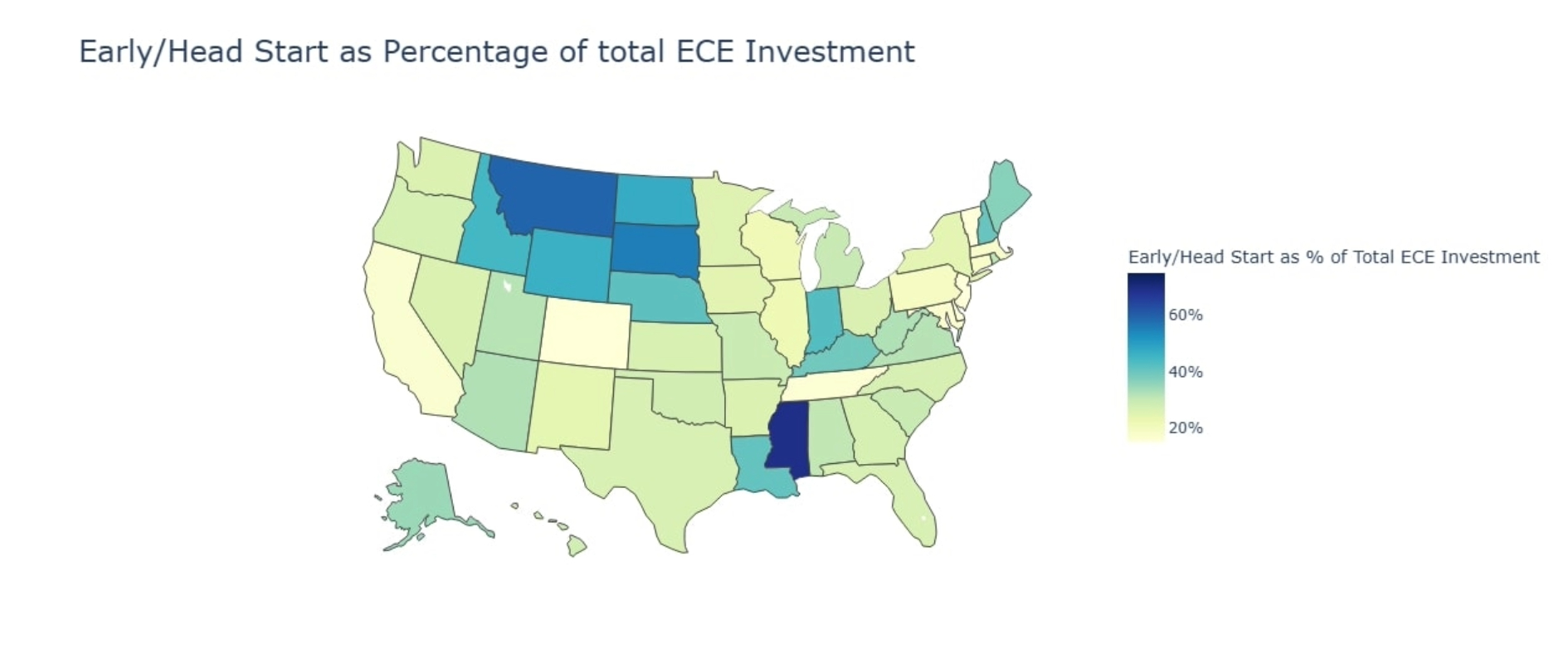What’s at Risk for States if Federal ECEC Funding is Reduced, Altered, or Eliminated
By Michelle Bezark, Ph.D.
Unlike the K-12 system in the U.S., which is funded primarily by state and local resources, Early Childhood Education and Care (ECEC) relies heavily on federal funding. For decades, federal investments, such as Head Start and the Child Care Development Block Grant (CCDBG), have been the backbone of ECEC systems in all states. These funding streams support essential services for infants, toddlers, and preschool-aged children, particularly those in low-income families. Despite their critical role, these funding streams are increasingly vulnerable in today’s political climate.
CELFE’s Shortchanged Project analyzes all early learning funding streams together to chronicle how much – or little – we spend on the care and education of children before they enter kindergarten nationally, state-by-state, and over time. This includes federal funding and state-required matches, as well as any additional state funding that provides services for:
- Child care
- Pre-K
- Early intervention and special education
- Home visiting
The Shortchanged Project then compares public care and education spending for the younger age groups to public spending on older children to measure how close – or how far apart – these investments are. The project, therefore, brings clarity to how little we invest in children before they enter kindergarten.
When we mapped the data, one fact stood out starkly: in most states, federal dollars far outstrip state and local spending for our youngest learners. This is especially true for infants and toddlers.
The precarity of federal funding streams in the current political moment highlights what has been true all along: states and localities will need to invest at significantly higher rates in order to adequately meet the education and care needs of young children and their families. The graph below shows the degree to which federal investments dwarf state and local spending on children’s education and care before kindergarten entry. This contrast is particularly glaring when compared to K-12 investments.

Head Start funding, in particular, is a foundational component of ECEC systems in every state across the country. It is the longest-lasting and most durable funding stream in a fractured ECEC system. In most states, Head Start federal funding comprises 20-40% of the overall public ECEC investments. This is true in states across the political spectrum. However, our research shows that states that invest less of their own general revenue in ECEC rely more heavily on Head Start to support their system.
States like New Jersey and Georgia that invest a great deal in their own ECEC systems would be far less affected by a potential federal retrenchment than states that do not. In Mississippi, for example, Head Start covers roughly 70 percent of ECEC funding. Removing it would destabilize and potentially devastate the overall ECEC system. A similar situation is seen in states like Montana and Wyoming. The map below shows the percentage of total ECEC public investments that Head Start covers in each state.

Isolating individual funding streams – like Head Start – within a state’s larger ECEC funding system can help lawmakers and advocates understand exactly what significant changes to a particular funding stream would do to a state’s bottom line. This is crucial information to assess the impact of proposed budget cuts, advocate for further investments, and think creatively about how to fund ECEC systems in ways that better serve the needs of young children, their families, and the professionals who care for them.
To access data from the Shortchanged Project, visit our website.
Michelle Bezark is a Senior Researcher at the Center for Early Learning Funding Equity.